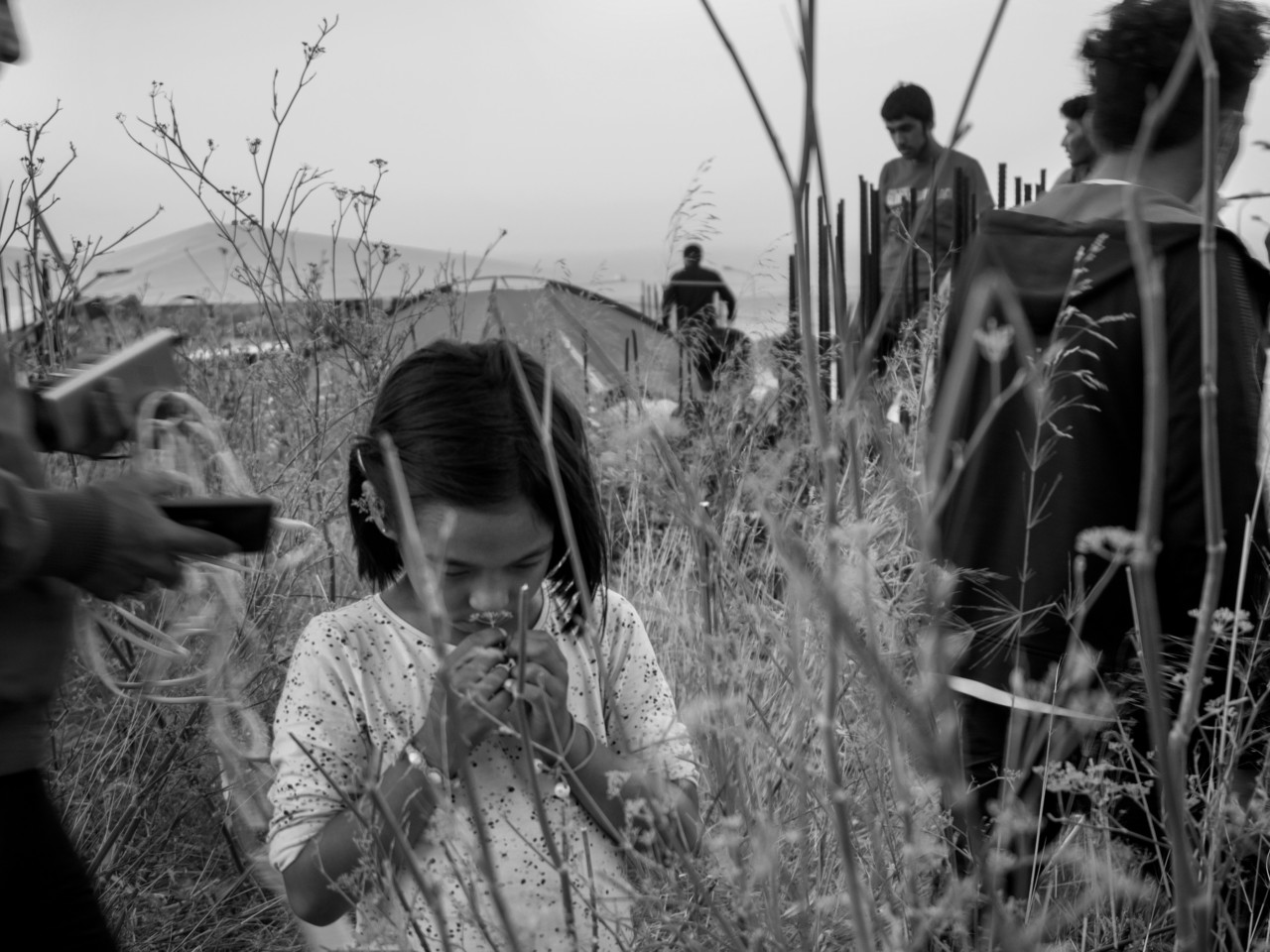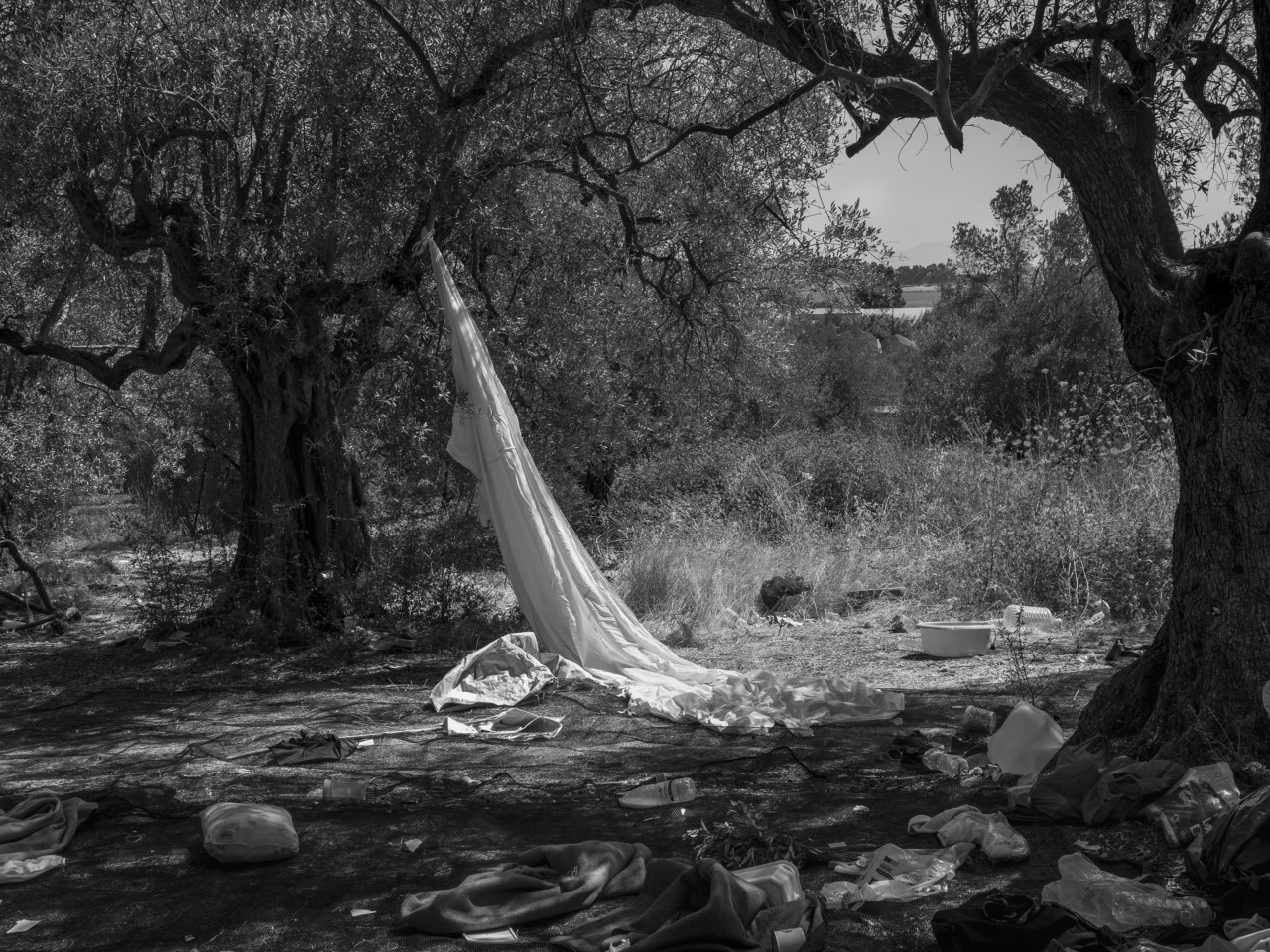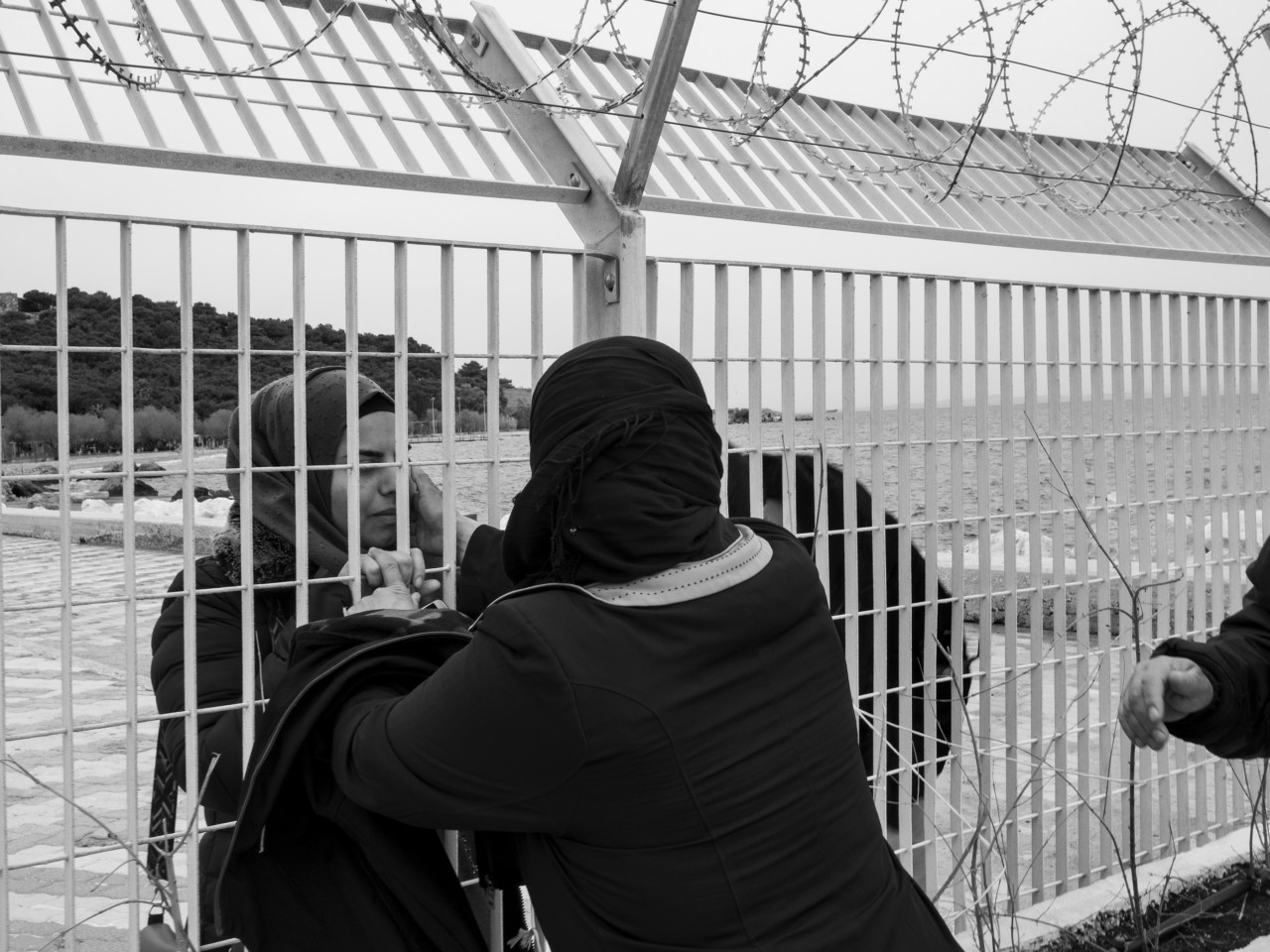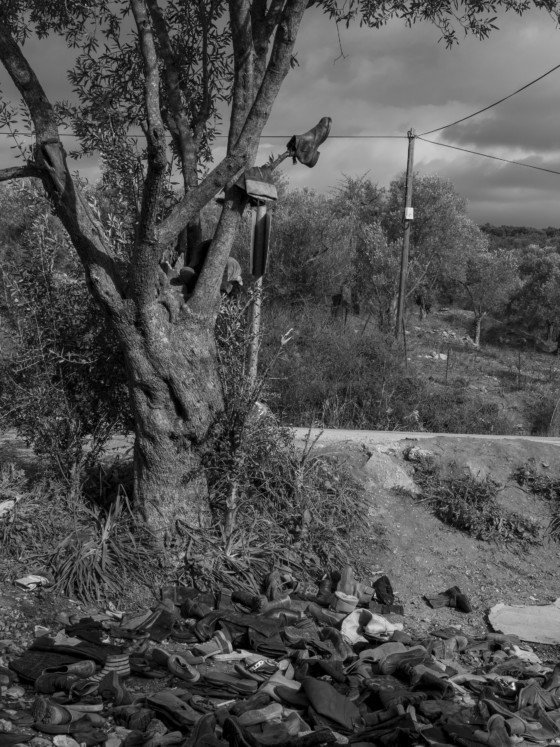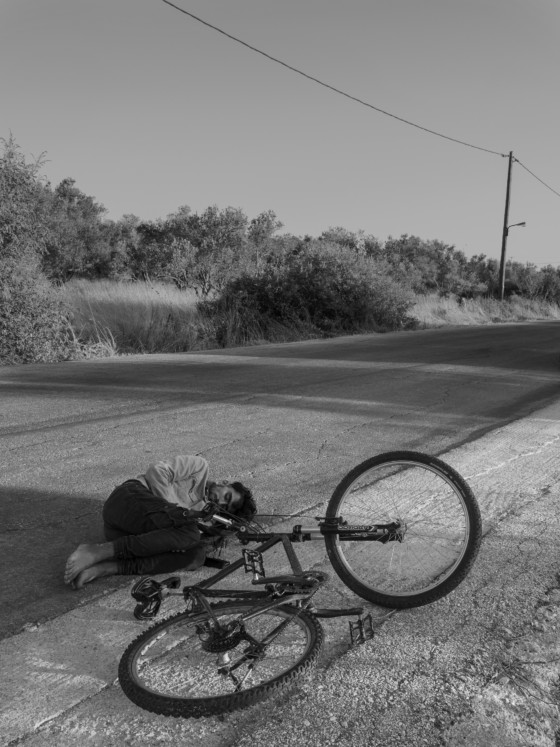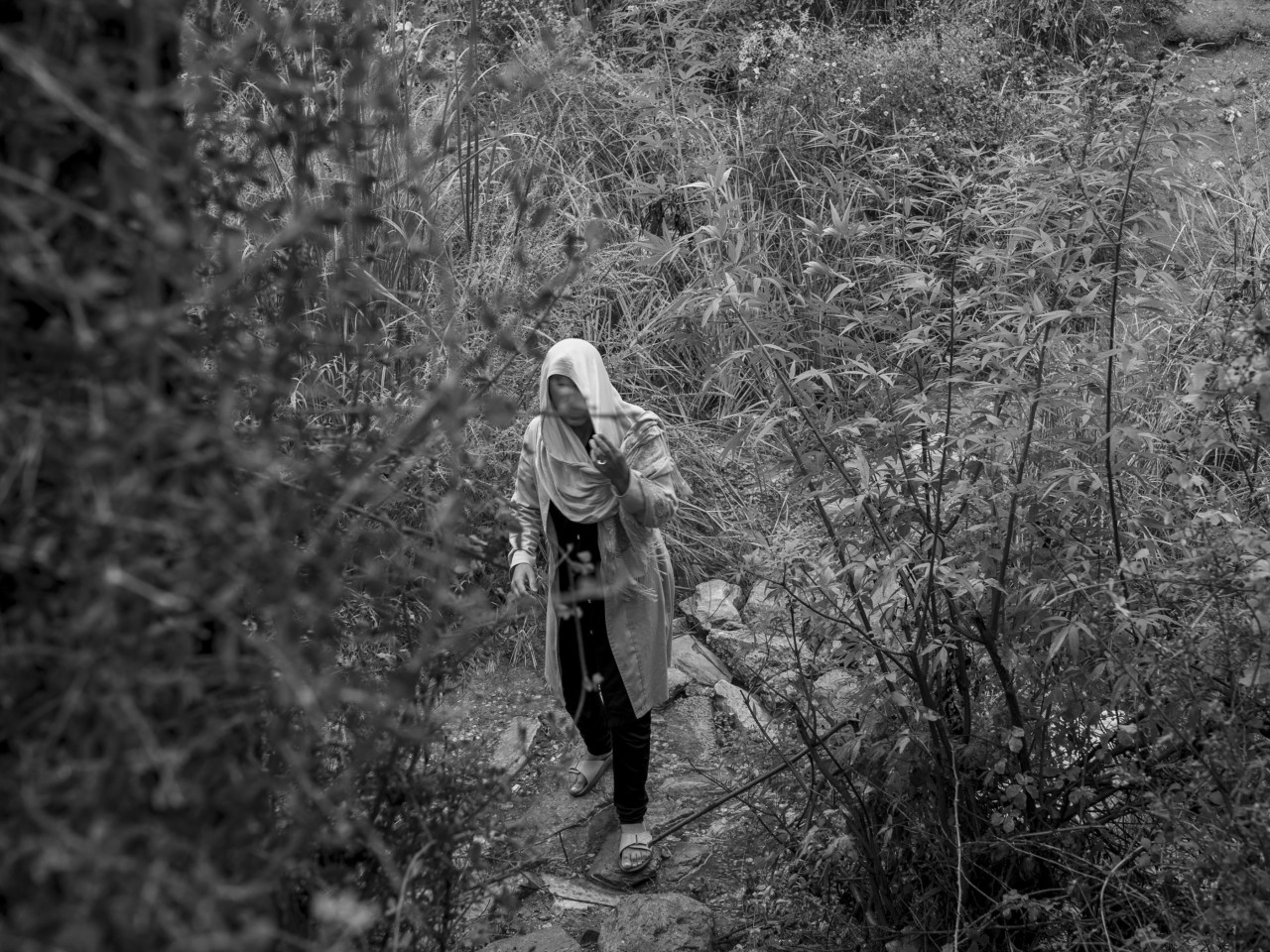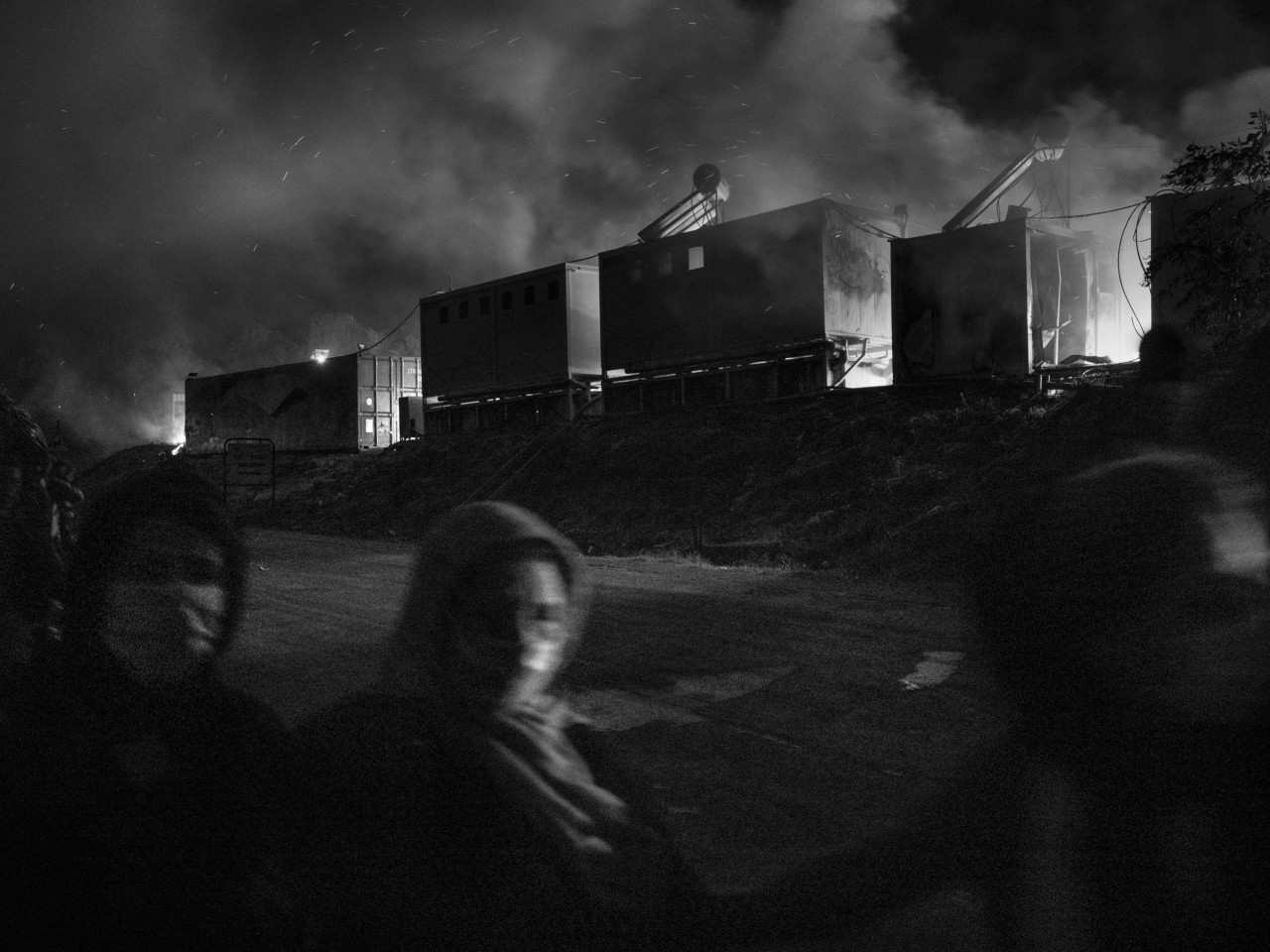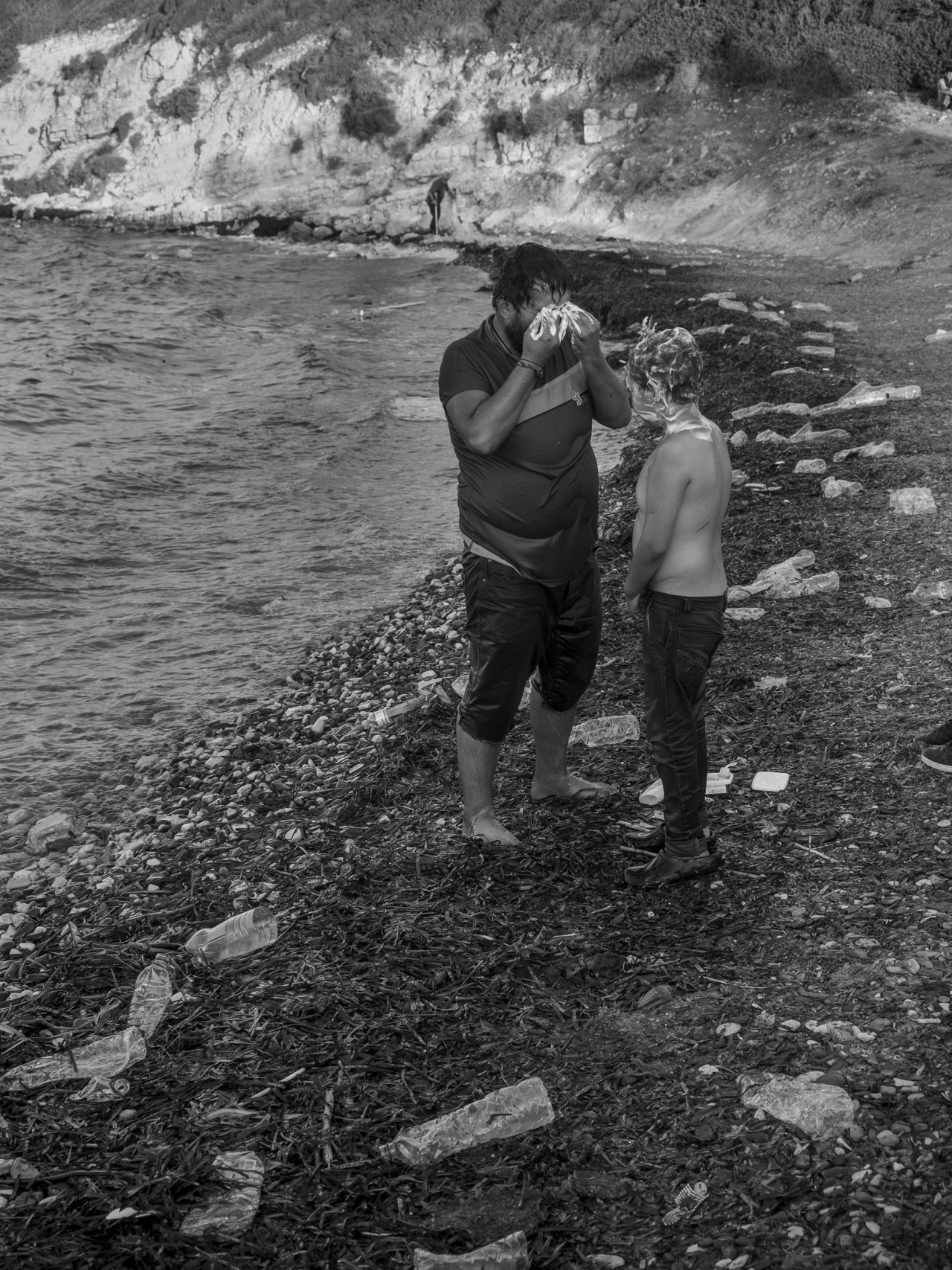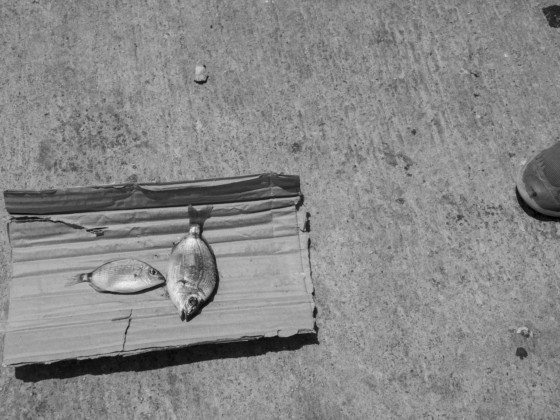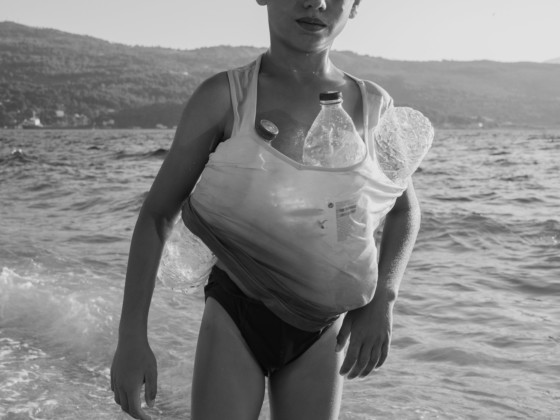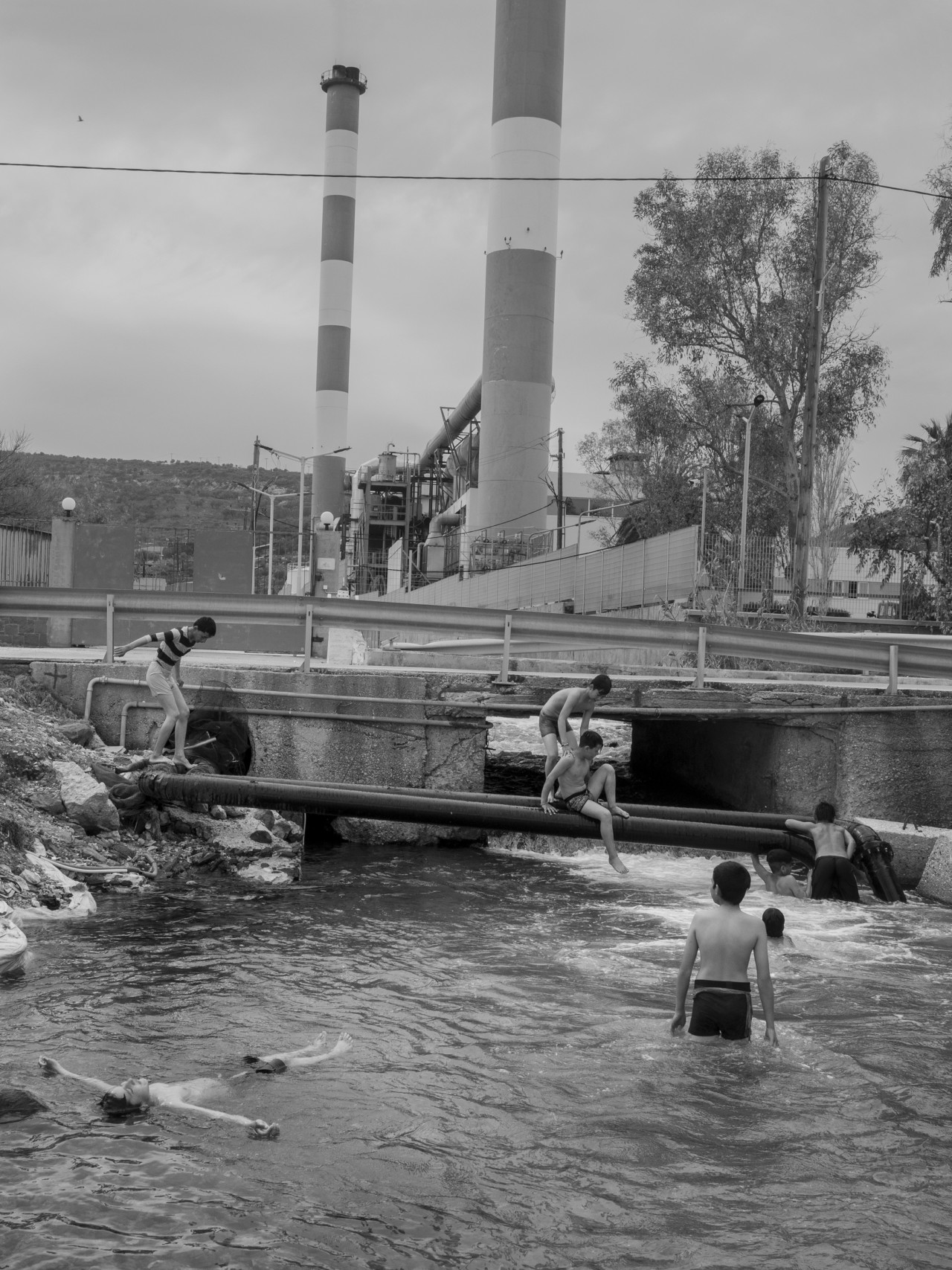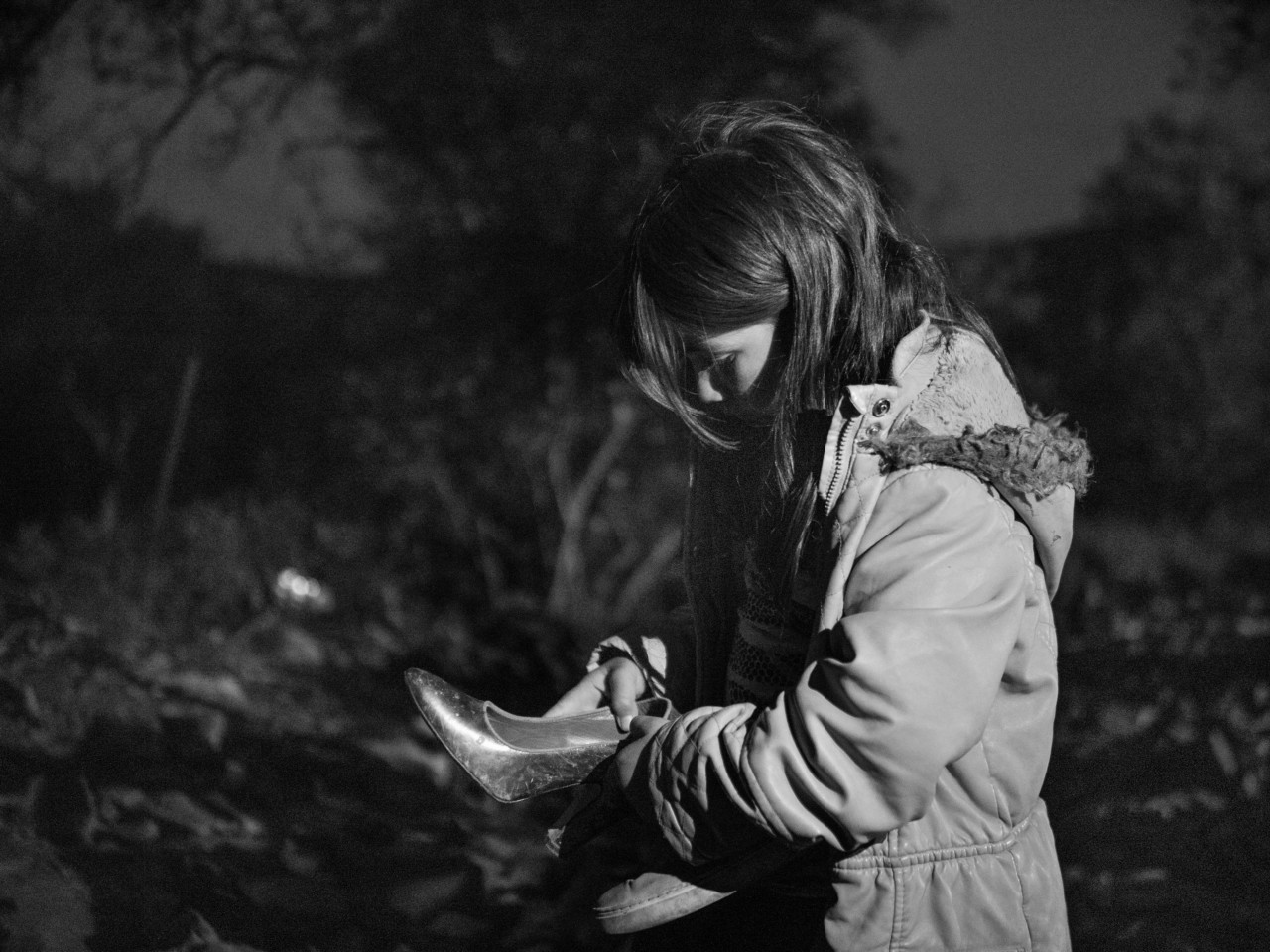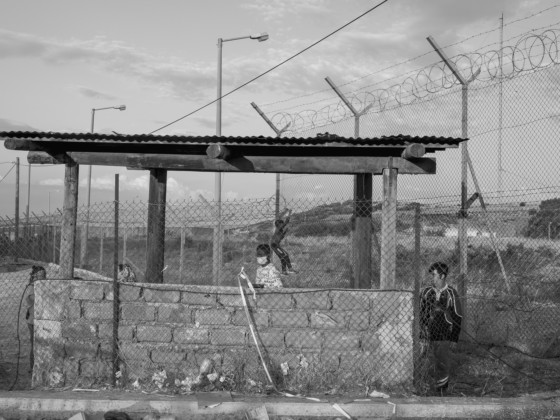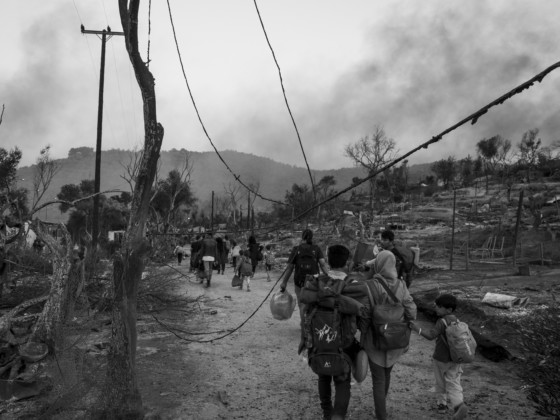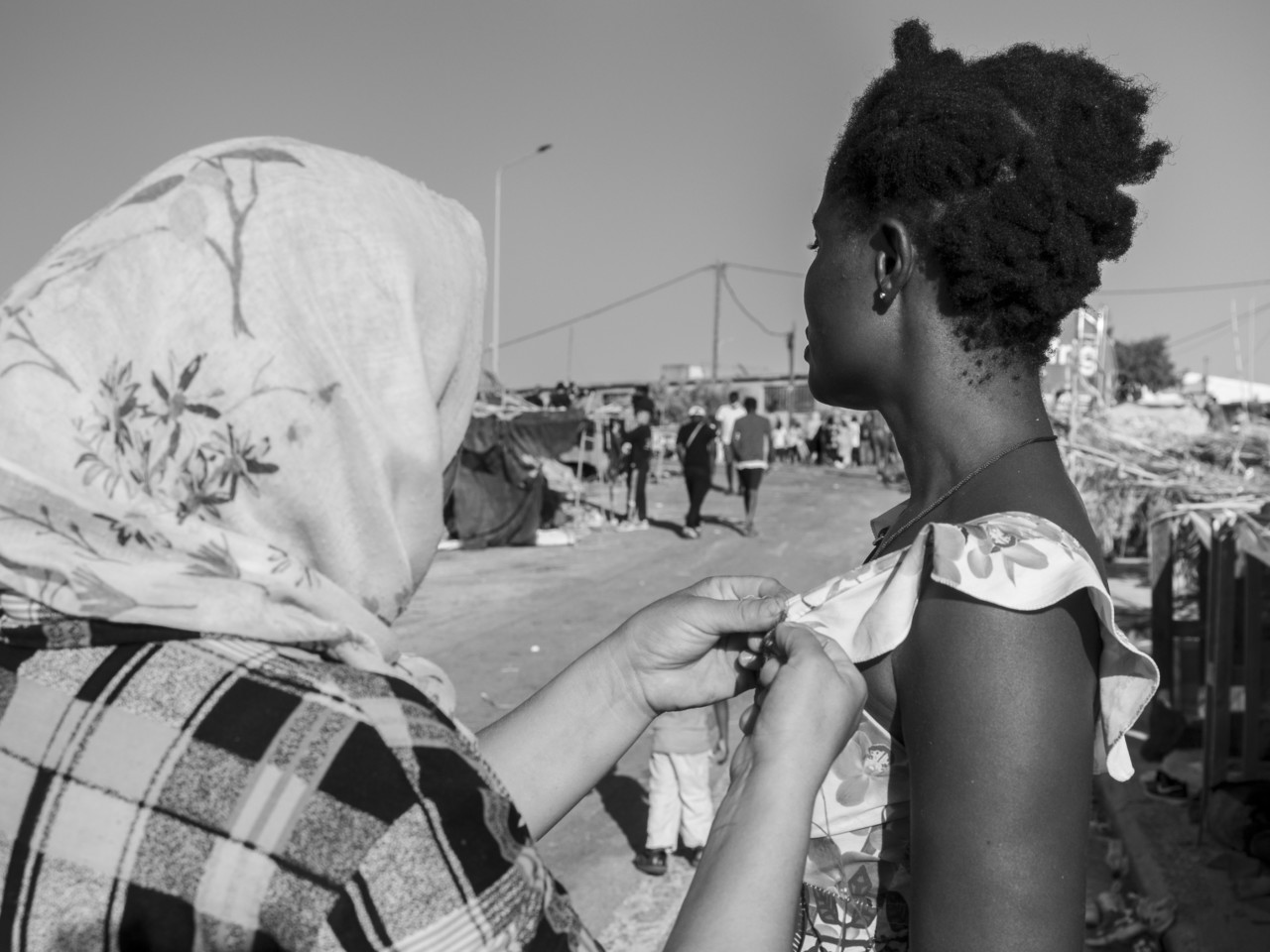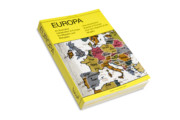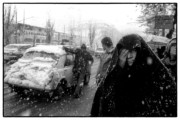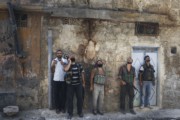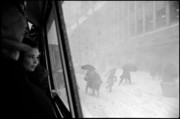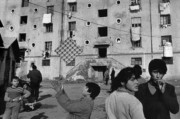“What people face every day on the island is shameful”
On International Migrant's Day, Enri Canaj discusses his ongoing work on Europe's migrant crisis, most recently focused on Lesbos, and the devastating fire at the island's Moria camp
In the following Q&A, Magnum member Enri Canaj discusses his ongoing work on migration in Europe with Bayryam Bayryamali. The photographer considers how refugees reclaim their agency, reflecting on the ways in which his life has been defined by migration, the closeness he feels to the subjects he photographs, and mobility as a defining part of the human condition.
Bayryamali is a Bulgarian Turkish visual researcher who recently worked as an Archive and Digital Trainee at Magnum Photos. His research examines the issues of new world borders, il/legal identities and intergenerational trauma in relation to the current socio-political reality in Eastern Europe.
December 18 marks International Migrants Day, an occasion commemorating people who have migrated, which proclaims mobility a part of human nature. Founded in 1947 by four photographers motivated to use their skills to share a portrayal of the world as it emerged from the apocalyptic post-war landscape, Magnum Photos has documented various events of migration with a dedication to humanism over the agency’s history. Almost 75 years after those initial efforts to record millions of refugees scattered across the globe, Magnum member Enri Canaj has been using his camera as a tool to understand the ways in which both his and others’ lives have been shaped by migration.
Over the years spectators have become accustomed to images depicting the “problem of immigration” through various forms of media dissemination. Flicking through scenes portraying individuals in dire conditions, it seems that often such photographic representations fail to give agency to the subjects. Even though many of these images are taken with good intent, they often end up perpetuating overused tropes which sustain the argument that there is an inherently unresolvable problem within migration, one that the viewers of these photographs can do nothing about.
Canaj’s recent depiction of residents and the fire at Lesbos’ Moria camp diverges from the usual stereotypical representation of refugees. The Greek-Albanian photographer, a migrant himself, photographed the site on September 8th and 9th when flames ravaged the camp, the largest of its kind in Europe, leaving 13,000 migrants and refugees without shelter. According to local reports, the fire was started by the occupants of the camp in act of a protest. The images of the Moira camp fire are not only images of fleeing asylum seekers, but images of protest, of migrants demanding safer and more just living conditions.
Bayryam Bayryamali: How does your background as an immigrant affect your approach to photographing others living in precarity and uncertainty who are waiting, trapped in the asylum process?
Enri Canaj: When I first migrated with my family, I was eleven. As a child, that experience was written in my memory as a mix of images and feelings. It’s a book written inside of me. When I started photographing and working on covering migration, back in 2009, that book fell off the shelf it had been on, and reopened. For me, it was a process of going back into my past while I was testifying to the present experience of other migrants. I know how it feels to be trapped, being undocumented for many years, living at risk, and all of those feelings were returned once again while I was photographing those people’s journeys and stories. Photography helped me decompress all the experiences I was carrying within me. I stopped being a passive receptor of reality, and in doing so I acquired the possibility of expression.
"Figuratively speaking, migration for me is like a big tree. The tree’s roots symbolize the common or shared reasons and motivations... People move to other countries dreaming of a better future for their children, escaping war, oppression, and violence"
- Enri Canaj
Do you feel closer to your subject because of that personal understanding? Do you feel like you understand what is the driving force for them to seek refuge? Or do you believe that every migration experience is individual and that if we try to search for wider patterns, the details of somebody’s life can be lost?
Well, figuratively speaking, migration for me is like a big tree. The tree’s roots symbolize the common or shared reasons and motivations… People move to other countries dreaming of a better future for their children, escaping war, oppression, and violence, living beyond misery and conflict — while bringing along with them their dramas and fears, traumas, and hopes.
After this, the tree trunk starts to take shape, so to speak. Where one lands will dictate what kind of soil will feed those roots – the system and practices people will find themselves living in or under, and the various attempts of European nations to accommodate the newcomers or not. The transition journey begins with all of these challenges. A new relationship is built during this period between the host country, its society, and those arriving, seeking a new life. As in any other relationship, there are the ups and downs… And many hard lessons and difficulties, as well as little sparkles of joy, combining in a feeling which is bittersweet .
And later, you start building your individual path, and these are the branches of the tree. You start writing your own story. As a migrant, you feel that nothing belongs to you, your freedom is the only thing you possess. And for me, that’s the beauty of this tree. You take risks because you have nothing to lose. This energy, your hopes and dreams, lift you after any fall. You start noticing small, fragile leaves and take good care of them in order to help them to grow stronger, healthier, and greener… And it never stops, even in the best-case scenario, where fruits come to life and you become part of the whole tree.
"For me, there is no interest at all in who started the fire. What people face every day on the island is shameful. And people respond to this, teaching me how strong and amazing we all are, as humans. Communities draw close and help one another out..."
- Enri Canaj
Photographers in these situations, which you have previously described as ‘history-in-the-making’, often end up in a moral dilemma… There is a question of whether to help the subject of your photograph or document their plight. How do you deal with that, especially when you were taking images of the Moria camp fire?
Photographing has to come as a harmonic process despite circumstances. If this is set off-balance, well… people come before anything else. Humanity is what makes us human beings.
Often when photographers are documenting topics related to migration, we end up seeing the reproduction of dehumanising tropes that portray asylum seekers and refugees as individuals with no agency, trapped in a political crisis. However, the case of the Moria camp is quite interesting here, as is your documentation of it… Authorities say that the fires were started by refugees protesting new COVID-19 policies. If we believe that it is true, we might also say that these images were not just of people fleeing the camp, but images of protest. Would you agree?
Absolutely. For me, there is no interest at all in who started the fire. What people face every day on the island is shameful. And people respond to this, teaching me how strong and amazing we all are, as humans. Communities draw close and help one another out. Mothers organize, and look after each other’s children while they have to go to wash their clothes, or get groceries. Older children teach the younger ones. Toys are placed around the cribs that parents have built themselves for their babies while they themselves spend their nights in the open. People take their own initiatives in trying to protect themselves from the virus, as there are no facilities at all. Building their churches and mosques in the middle of the desert where people can pray, hope, and share. These acts shape the ‘tree trunk’ in spite of dehumanizing conditions, demonstrating that the sense of human care within the migrant communities is very much present and alive. I strongly believe this is what feeds the souls of those surviving on the island every day.
"The sea represents that bitter-sweet feeling... It is the place from where thousands of people reached Europe. Many did not make it. Some of the bodies were brought up out of it; others are still in its depths. At the same time, it is now the place where kids play"
- Enri Canaj
Your work seems often to use the sea as a recurring theme. We see people in distress trying to reach the shores, while sometimes we gaze at people enjoying their time by the coast, or for example washing their clothes on the shore. What is your relationship to the sea photographically, and symbolically?
The sea represents that bitter-sweet feeling I mentioned before, I think. It is the place from where thousands of people reached Europe. Many did not make it. Some of the bodies were brought up out of it; others are still in its depths. At the same time, it is now the place where kids play in the afternoons. As a result of a lack of the most basic facilities, the sea has turned into a place where people can bathe, wash their clothes… it even provides them meals. It’s the sea’s strength that fascinates me. Its immense size, movement, and being always present through its sound.
As somebody who has been documenting the failed attempts of Europe to accommodate people who are migrating to find a safer environment, what have been the highs and the lows of the journey so far?
Here I would like to add that there are a few EU countries that have built up good systems, where people arriving have been embraced and treated with dignity and respect. One can see how – a few years after reaching their final destination – people are building up their lives, becoming able to provide for their families, and trying to pursue their dreams.
The lows I’ve witnessed on this journey are the bodies on the Aegean seashore. The ones who risked everything and ultimately lost their lives. Moria and the new temporary camp in Lesbos also symbolize the biggest failures of the EU – translated into thousands of women, children, elderly, and adults living a true Greek tragedy.
What do you hope you can achieve with your practice and where do you see yourself having the biggest impact?
I look at immigrants and I see in them the entire, tragic, human condition. So, I want my photographs to be transcendental, to capture more than they depict. This is how I am trying to make my own, personal mark as a photographer. I strongly believe that it is so important for these stories to be told and shared. I see people becoming harsher towards refugees, day by day, in Greece and everywhere else. It’s as if the locals have had enough. But, when someone comes to you from a war-torn country, you cannot just shut the door on their face saying “Enough, no more!” We can all learn not only from our experiences, but also from our new neighbors who have brought along their own cultures, traditions, colors, as well as their pain and strength… There’s so much to be learned from one another.


